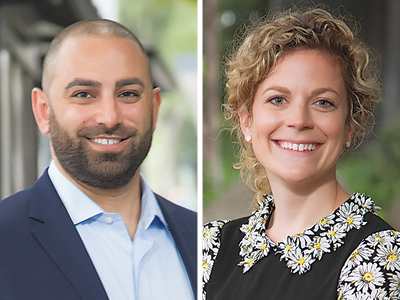
Many of the workforce trends we see for 2020 have been around but are becoming the norm. Probably not surprising to anyone is that Millennials and Gen Z will continue to compel changes in the workplace.
Job hopping
Changing careers multiple times and frequently, known as “job hopping,” is slowly becoming the norm. Many individuals see it as a fast track to advance their career and earn higher wages. However, it is not always about the paycheck or the promotion. Many employees are willing to take a pay cut for the right opportunity. Job hopping helps people stay motivated on the job and find careers about which they are passionate, which is why this trend is likely to continue to grow. Millennials change jobs more often than other generations. They are often searching for a company that fits their values and a job that gives them a sense of purpose. Gallup estimates this turnover costs the U.S. economy $30.5 billion annually. What is your company doing to engage and retain your employees?
Company sponsored training
An ongoing trend is industry demand for more skilled employees. Companies want well-trained, productive workers, who can keep up with a fast-paced environment and also be responsive to changing technology. A growing number of businesses understand the value of well-trained employees and are willing to pay for upskilling their workforce, recognizing it improves productivity, employee morale and retention.
A trend we’d like to see is industries agreeing on trainings and credentials that would be recognized across that industry. Lack of industry-recognized credentials limits the trainings the workforce board can help pay for and limits company access to skilled workers, since many trainings are providing skills pertinent only to the job requirements of a particular company versus skills that are portable and transferrable across the industry. Shifting education to skills-based, lifelong learning will take a coordinated effort between those providing the training (education) and those in need of the training (business and industry).
60-year curriculum
One approach to do this is for colleges and universities to adopt a 60-year curriculum model to respond to the workforce needs of their community and region. Think of it as lifelong learning on steroids. According to a New York Times article, “60 years of high ed – Really?” – “Many continuing education programs already offer some of the elements. For example, the University of Washington Continuum College, which is the continuing education and professional development division of the University of Washington in Seattle, offers 99 certificate programs — most noncredit — as well as 111 graduate degree programs.”
Delivering on the 60-year curriculum would mean mini-degrees, credentials or badges and creating seamless on-ramps and off-ramps for people. For example, someone in the welding field should be able to come in and out of the education system as they progress in their career, each time learning something new that they can apply to their job, and each time gaining an industry-recognized certificate or credential that helps them earn a promotion and/or a salary increase.
By creating a stronger link between industry and education, employees are able to see the value of lifelong learning and understand how the immediate practical application of what they learn will help them excel in their career. Instead of focusing on one degree or certificate, institutions should work with business to create competency-based training and credentialing opportunities for employees. Doing this will enable people to get a paycheck and an education without having to choose between the two and companies will benefit from a skilled workforce that is engaged in their work.
Narek Daniyelyan is the Director of Strategic Initiatives at Workforce Southwest Washington (WSW) and Miriam Martin is the Director of Programs. WSW’s mission is to invest in human potential, driving the growth and development of our Southwest Washington economy. Narek can be reached at ndaniyelyan@workforcesw.org. Miriam can be reached at mmartin@workforcesw.org.






